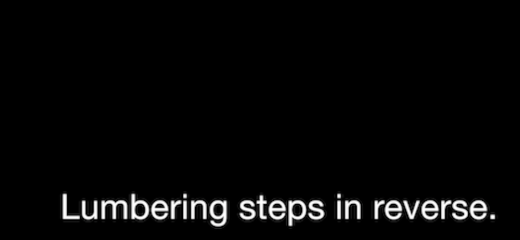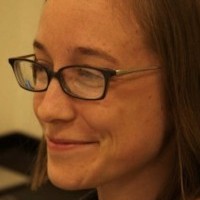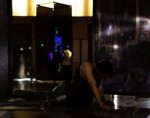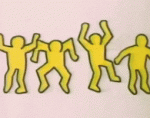
A Dance Heard and Not Seen
by Ellen Chenoweth
An unusual and exquisite dance is currently installed in the second floor galleries at the Institute for Contemporary Art of the University of Pennsylvania. Long Take, created by artist Carolyn Lazard in collaboration with dancer Jerron Herman and poet Joselia Rebekah Hughes, invites meditative rest in a darkened oasis.
One of the central premises of the work is that the dancer is unseen. Instead of watching a dance, the audience listens to Lazard reading the score, or movement instructions, while Hughes simultaneously describes the movement of the unseen dancer using text. As a result, the dance transforms in unexpected ways. Without being able to see Herman’s body, we can hear it better. We hear his slides across the floor, his breath. The audio description of his body in motion becomes poetry, read aloud for our pleasure. There are three audio layers: one of the dancer and his sounds, one of the artist reading the score, and one of the audio describer of the movement, and visitors can tune their ears to one, two, or all three distinct tracks at once.
The audio description is non-technical, fragments that I caught included language like “stands at attention, breaks attention, lifts foot,” or “wide-legged deep bend, arm swipes wall, deep bend,” all delivered in a calm, soothing voice. I could picture the dance, but not completely. I appreciated that there was no option to view the video of the dance on your own, and likewise, there was no picture of Herman. My imagination had to fill in the gaps. The audio description told me that the dancer had a visible disability, without further details. “Deep bend to twirl as moving through water.”
When I entered the shadowy room, marley on the floor, lights and speakers suspended from the ceiling, it felt like a sacred space. It made me think of the Rothko Chapel, another space that invites participants into meditation and stillness. Like all studios, it’s a place of possibility. I wondered what could grow from this space of contemplation with an absent dancer, the trace effects of their labor still echoing around the participants.
In keeping with values of accessibility, the installation includes a pleasing abundance of sliding scales. A person can choose how long they want to stay in the space. One can choose whether to be in darkness, or in an area of the space with more light. One can place their body near a speaker where the audio will be louder or a softer space. A witness can be seated or standing or laying down, eyes open or closed. The installation is free. There’s an option for taking the stairs or the elevator. A friendly gallery attendant even let me know that I could check my jacket or keep it with me. It’s rare to have so much autonomy as an audience member and I reveled in it.
I also savored the beautiful tension embedded in the work; I wanted to see the dancer but I couldn’t. This is a dance that resists spectacle like no other. It fights oversaturation. Its sworn enemy is Instagram. True to form, there are no images of the exhibit available from the ICA, only a few stills from video with audio description, in accordance with the artist’s wishes. I let out a long exhale and made myself comfortable.
Without a visible dancer in the center of the room, the other audience members become a point of interest. I could only see the silhouettes of the shadow figures sharing the space with me and couldn’t make out gender or age or race. My breath caught with the beauty of these strangers in the shadows, and the sudden addition of another layer of richness in the experience. These were audience members rather than performers, but the distinction seemed porous in the black and gray chamber of the installation.
Long Take highlights the possibilities inherent in designing a work or an experience with accessibility in mind, rather than a set of concerns to be addressed towards the end of a process. Lazard and their collaborators have created something expansive and wide open in its welcoming embrace, a fascinating experiment in what can happen when we don’t rely solely on visual information.
Carolyn Lazard: Long Take, Carolyn Lazard, Jerron Herman, Joselia Rebekah Hughes, ICA, 118 S. 36 St., March 10 – July 9.
By Ellen Chenoweth
April 1, 2023










